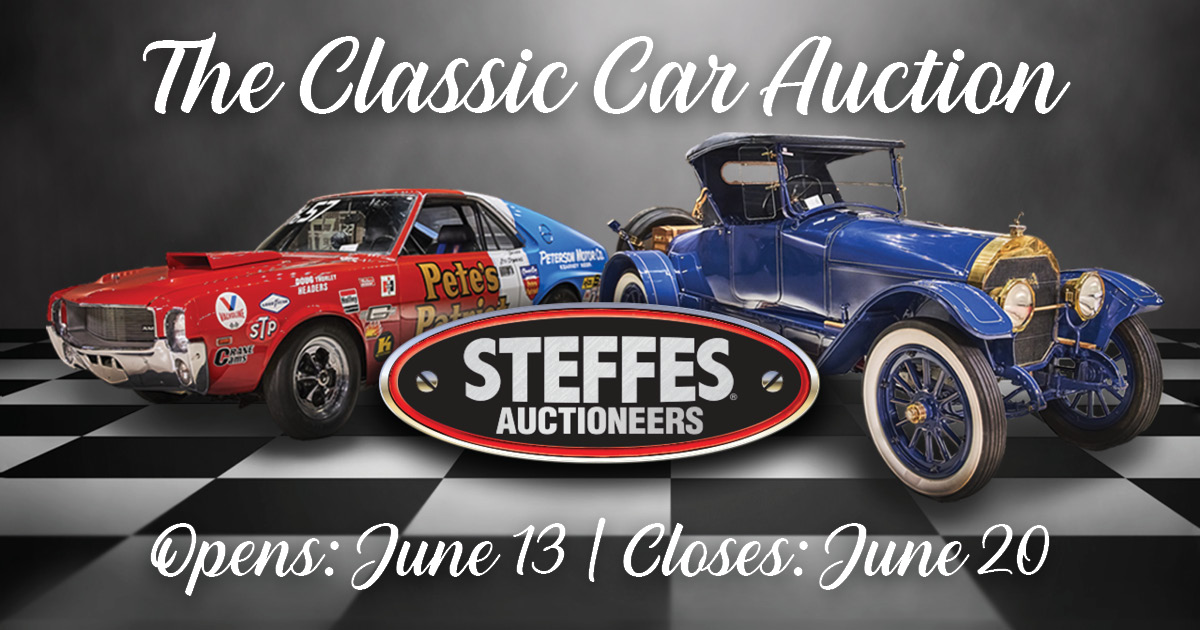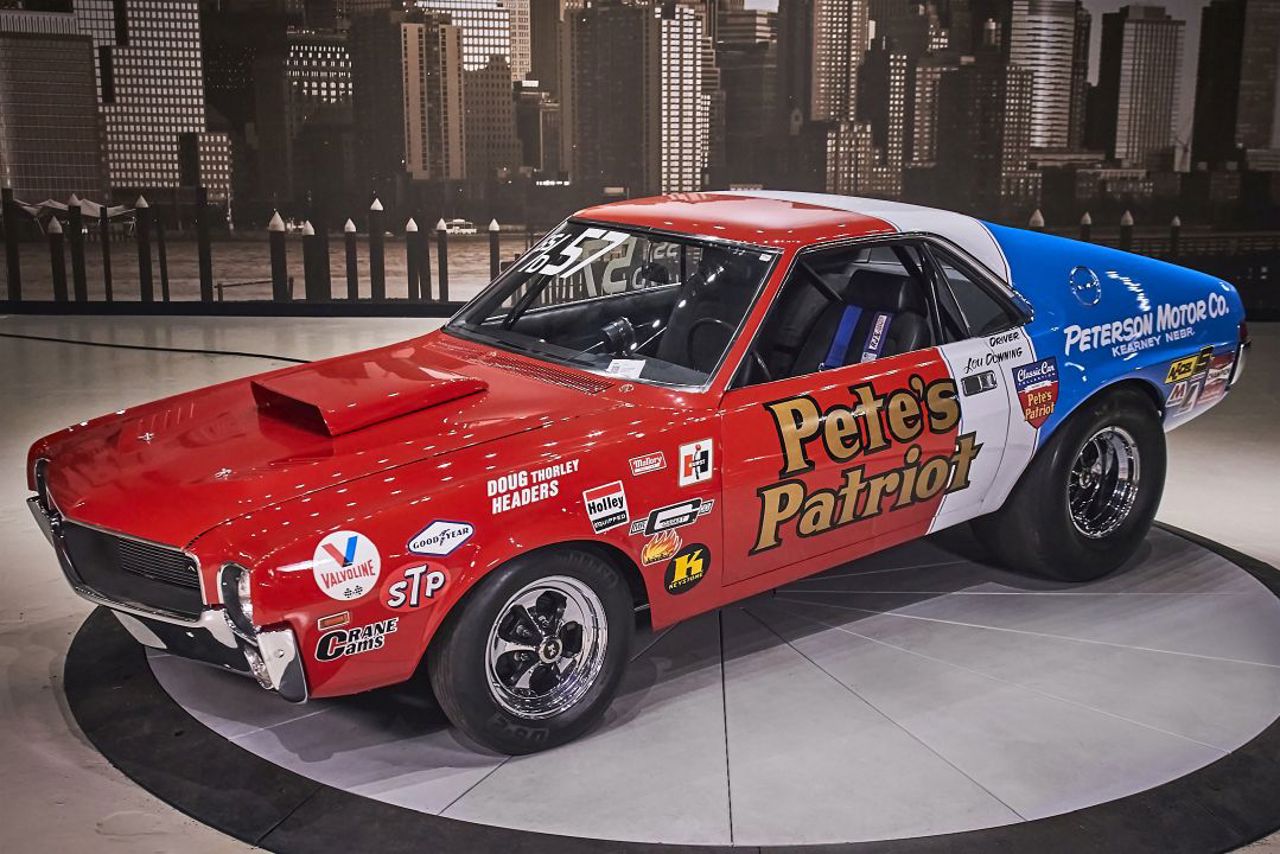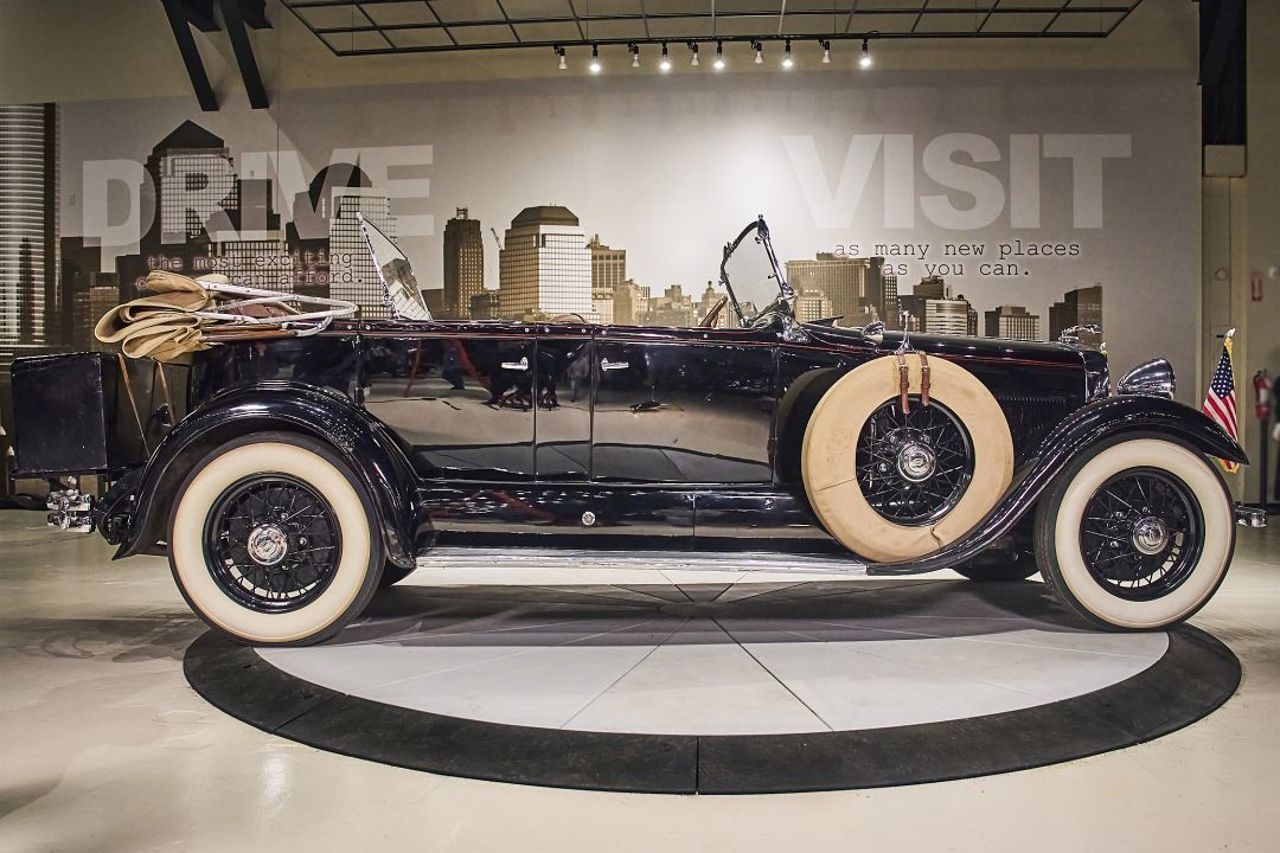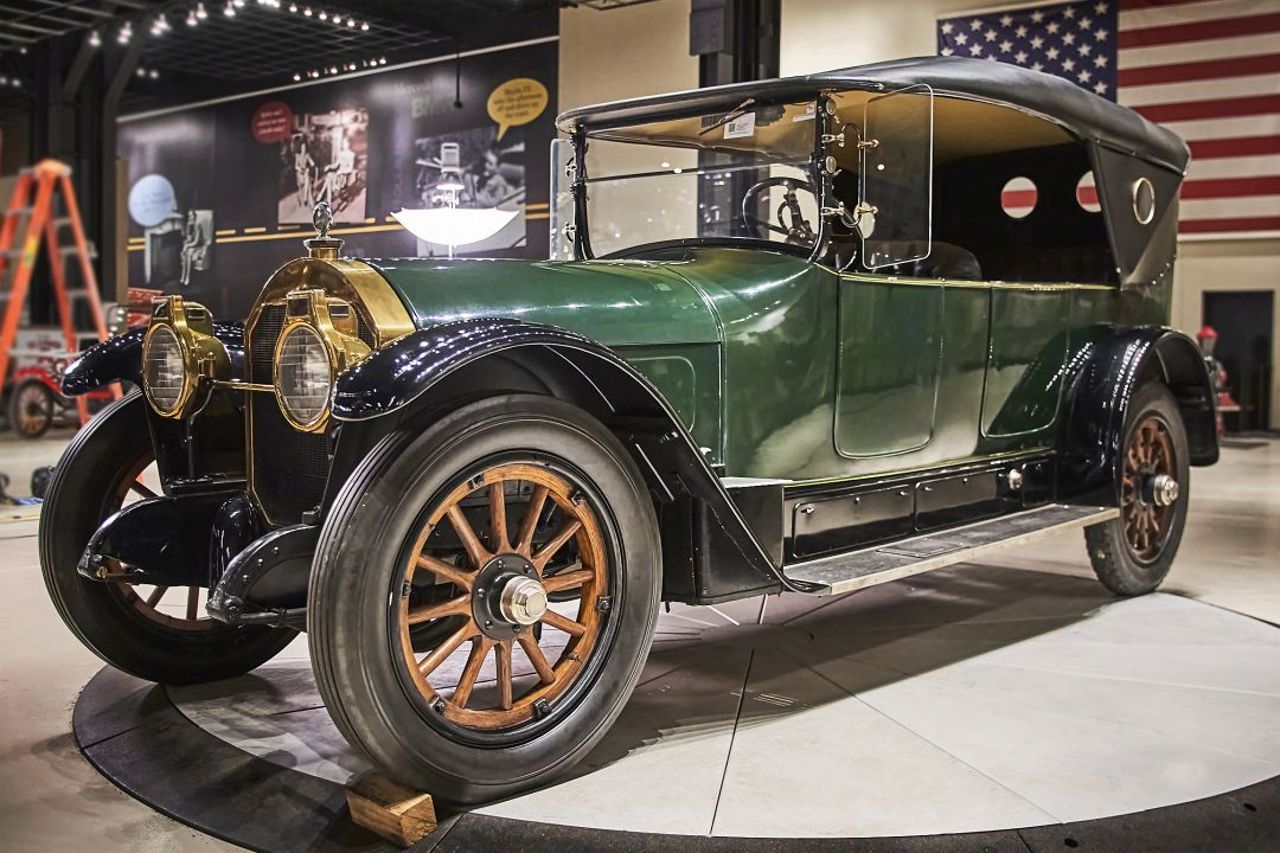
Unveiling the Extraordinary: Steffes Group Presents the Classic Car Auction!
May 2023
Step into the world of automotive history! Steffes Group is excited to be selling an impressive collection of 140 different classic cars, spanning from the iconic Brass Era to breathtaking Dragsters at the highly anticipated Classic Car Auction! These impressive cars are located at the Classic Car Collection Museum in Kearney, Nebraska, where these magnificent vehicles have been meticulously cared for over the past 12 years.
Nestled within the walls of the Classic Car Collection Museum, these automotive masterpieces have been cared for with the utmost attention to detail, thanks to the dedication of the museum's caretaker and passionate volunteers. With unwavering commitment, the caretaker and volunteers have gone to great lengths to ensure the cars' historical significance endures. Rotating engines, removing fuel and batteries, and carefully storing the vehicles on jack stands have become routine rituals, to ensure the absence of flat spots on the tires.
For automotive aficionados and collectors, the Classic Car Auction presents a once-in-a-lifetime opportunity to acquire a piece of history that may not be found elsewhere. Steffes Group has taken every measure to ensure a seamless bidding process. With over 100 high-quality photographs and detailed historical write-ups for most cars, buyers can explore each vehicle's unique story before placing their bids. The catalog also features close-up pictures of imperfections, allowing potential buyers to make informed decisions.
The Classic Car Auction opens on June 13 and runs until June 20, with the museum open throughout the auction for interested buyers to admire these timeless treasures. Operating from Wednesday to Sunday, 12 pm to 5 pm, the Classic Car Collection Museum invites all visitors to experience the magic of automotive history.
Check out some of the featured vehicles!
Lot #1 – 1969 AMX SS “Pete’s Patriot”,390 CID. V-8 engine, 4 speed manual trans., #39 of the Hurst factory drag race cars, first AMC to win an NHRA points meet and set a national record.

A 1968 AMX was the original Pete's Patriot. It raced one year, was sold to Steve Mercer of Kearney, and renamed "Steakmaker". Eugene "Pete" Peterson, owner of Peterson Motor Company, wanted to form a car club, buy one of AMC's (American Motor Company) new AMX's and prepare it for drag racing. The team purchased a 1969 AMX factory modified super stocker - the new Pete's Patriot. Loren, "Lou", Downing would race the car and his high school friends would keep it in competition shape. The AMC club with nine high school students from Kearney raised money for travel expenses and equipment for the car by washing and polishing cars, mowing lawns, washing windows, etc.
The car was modified by Hurst after it left the factory. Changes were made to the engine and transmission and anti-sway bars were added. The interior was modified for racing. These cars were built for racing and were not street-legal. Modifications included JE Forged pistons, heads modified by Crane, a manual tach drive, a dual point distributor, an Edelbrock Cross Ram intake manifold, two Holley four-barrel carburetors and Doug's headers. It was Hurst Car #39 and was listed as having 340 hp for insurance reasons but these cars could produce 420 horsepower.
It raced in the NHRA (National Hot Rod Association) SS/D class. It was capable of running 11.20's to 10.70's at 124-130 mph in a quarter mile after the Hurst modifications.
The car took the Peterson Racing team across the U. S. into a record-setting trophy-winning record in drag racing. With Downing driving, Pete's Patriot took the Division V crown in 1969 and 1970. It became the first AMC car to win an NHRA points meet and set a national record of a 10.81 quarter mile at 127 mph.
Lot #2 – 1930 Lincoln Model L, Dual Cowl Sport Phaeton convertible, 4 door, 385 CID. V8 engine rated at 90 HP., 3 speed trans., four-wheel brakes, 1 of 119 manufactured Dual Cowl Sport Phaeton's denoted as Model 176B, shows 44,284 miles.

The Lincoln Motor Company was founded in 1917 by Henry M. Leland to produce Liberty Aero engines during World War I. Leland, one of the founders of Cadillac, left Cadillac during the First World War to form the Lincoln Motor Company. He left Cadillac due to a disagreement with General Motors boss William C. Durant. Leland was 74 years old when he left. He chose the name Lincoln after the president he had voted for in 1864.
After the war, Leland was faced with the decision to close the aircraft engine plant or try to find another business for the 6,000 employees and the factories. The factory was retooled to accommodate luxury automobile manufacturing, and the first Lincoln cars were made in 1920. Leland's forte was not design, and the car suffered from a stogy appearance and bad economic times. Leland sold out to Henry Ford in 1922. In 1927, the Lincoln marque adopted the greyhound as its emblem, which was later replaced with a diamond, which is still in use.
Edsel Ford, Henry Ford's son, was responsible for running Lincoln. The Lincoln was refined with his styling genius and designs that would make Lincoln one of the premier motor cars in the world. Lincoln was well-established as a premier luxury car maker by 1930. It produced vehicles equal to the finest in the world.
"Dual cowl" refers to the two windshields on the 1930 model. When the back seat is in use, another windshield can be raised in front of it. "Phaeton" originally meant a horse-drawn carriage with a front and back seat and a folding top for the front seat. The name was adopted by automakers for cars with similar seating and roof arrangements though this Lincoln's roof covers both front and rear seats.
Model year production in 1930 was 3,212; calendar year production was 3,515. Twenty models were offered. A more refined V-8 and available 120 HP in the Model K eventually replaced the Model Lin 1931. Top speed was 80 mph and fuel consumption was 12 miles/gallon.
Lincoln made a concession to modern tastes in 1931 and began offering fenders painted to match body colors for the first time. A spare wheel cover gave the car a modern appearance. More precise control was now provided by adopting worm and roller steering. They had 4-wheel mechanical drum brakes.
Lot #5 – 1917 Locomobile Model 38-2, 7 passenger touring sedan, 4 door, 425 CID. T-head 6 cyl. engine rated at 49 HP., 4-speed trans., engine ID# 11442, 139" wheelbase, shows 70,095 miles.

Locomobile operated from 1899 - 1900 from Watertown, Massachusets, and from Bridgeport, Connecticut from 1900 - 1929. The company was incorporated in 1899 by John Brisben Walker, editor and publisher of Cosmopolitan magazine, and Amzi Lorenzo Barber who made a fortune in asphalt. The name "Locomobile" came primarily due to the likeness the machine had with the railroad locomotive with its two pistons and connecting rods located in the rear sole. The car was actually a Stanley Steamer with the name Locomobile on it.
In 1905 they began producing race cars and, in 1906, built two 90 horsepower race cars that were entered in the prestigious Vanderbilt Cup races that year. In 1908, one of the two Locomobile race cars won the race, the first international race won by an American-built car. William C. Durant purchased the Locomobile Company of America in 1922.
Locomobile was later known for building some of the finest automobiles in the country and was considered the American Rolls-Royce. It was called the "best-built car in America". Its primary competition came from Pierce-Arrow, Peerless, and Packard-all prominent car makers, but Locomobile was the most expensive. The cars were built for quality rather than quantity.
When a car was ordered from a Locomobile dealership, a team of six highly qualified mechanics went through the factory and gathered the parts and pieces needed to build the car to order. The lead mechanic would stamp his initials on the main bearing caps as he assembled the engine. Locomobile never built their own bodies.
The company's first six-cylinder production car was the Model 48, introduced in 1911. The 525 cubic-inch, T-head engine featured a square design with a bore and stroke of 114mm. It was built until the company's last year, 1929. It could cruise at 55 mph on the occasionally encountered truly good road. Octagonal shapes such as the lamps and instruments were a common theme for Locomobiles and helped differentiate them from other cars. By 1914, custom body builders were often contracted to build bodies for wealthy clients. Interiors used English broadcloths, velours and tapestries, Tiffany lamps and accessories by Tiffany Studios.
After several changes of ownership, Locomobile ceased production in 1929, largely a result of the stock market crash, which caused its market to disappear.
To view the full catalog of incredible cars selling on the Classic Car Auction, click here.
Each of these featured cars carries a rich heritage and tells a unique story, waiting to be continued in the hands of passionate collectors. Whether you're an avid enthusiast or a newcomer to the world of classic cars, the Steffes Group Classic Car Auction promises an unforgettable experience, where automotive dreams come to life.
For additional information, please reach out to Ashley Huhn of Steffes Group at 701.238.1975, Steven Nelson of Steffes Group at 641.430.2591, or Alan Gentz, owner, at 303.619.8698.



